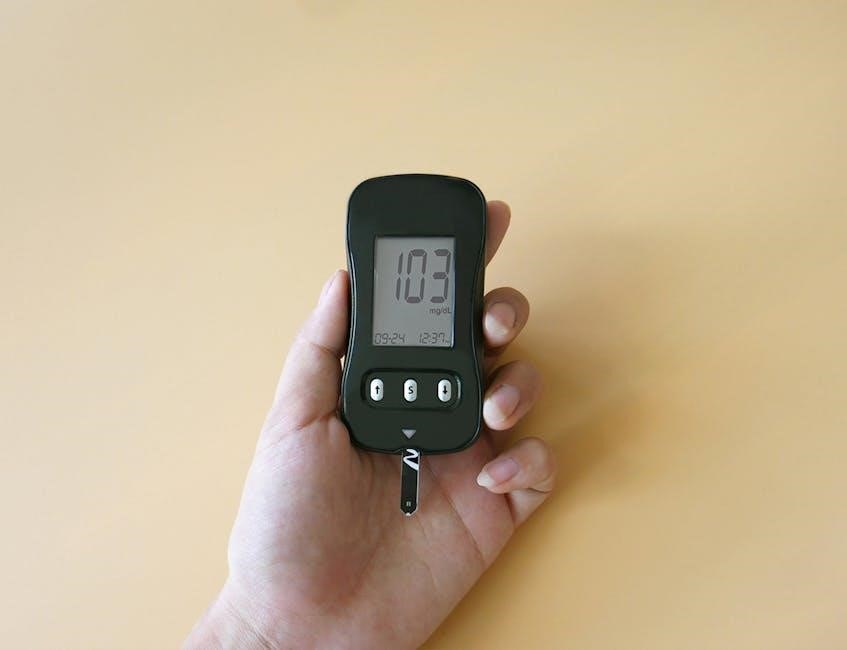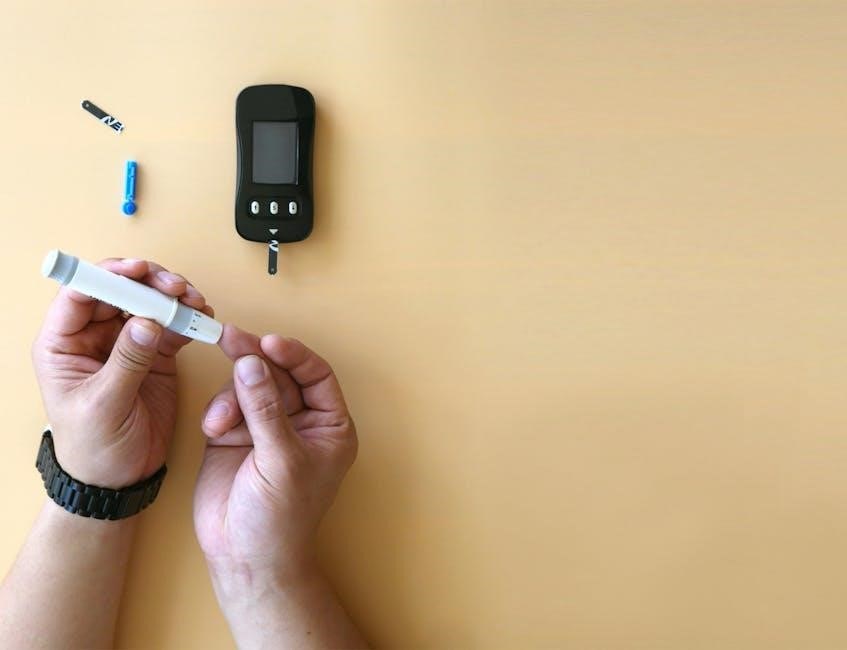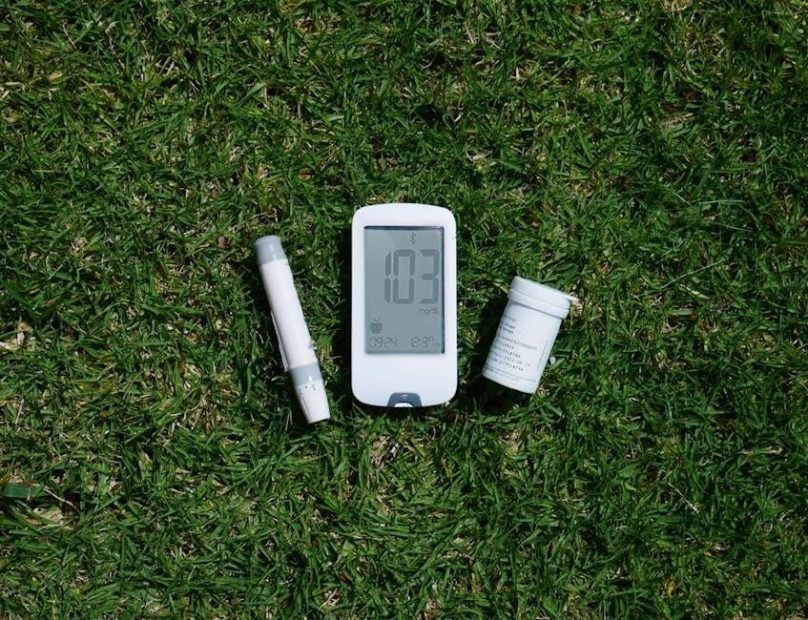Omron Blood Pressure Monitors are trusted for their accuracy, portability, and ease of use. Designed with innovative features like IntelliWrap cuffs and Bluetooth connectivity, they empower users to manage their health effectively from home, making them a top choice for both individuals and healthcare professionals.

Key Features of Omron Blood Pressure Monitors
Omron Blood Pressure Monitors are renowned for their advanced features, including IntelliWrap cuffs for easy one-hand use and Bluetooth connectivity for syncing data with smartphones. The 360 Accuracy technology ensures precise readings from any cuff position. Many models, like the BP7350 and HEM-712C, offer memory storage for multiple users and detect irregular heartbeats. The oscillometric method provides reliable blood pressure and pulse rate measurements. Some devices include EKG functions for comprehensive heart health monitoring. Their compact design, portability, and user-friendly interfaces make them ideal for home use. These features collectively enhance accuracy, convenience, and personalized health monitoring, making Omron a trusted choice for managing hypertension effectively.
Importance of Calibration for Accuracy
Calibrating your Omron Blood Pressure Monitor is crucial for ensuring accurate readings. Proper calibration guarantees that the device measures blood pressure precisely, which is essential for effective health monitoring. Without calibration, readings may be off, leading to incorrect interpretations of your health status. Omron devices are designed with user-friendly calibration processes, often guided by the instruction manual; Regular checks against professional medical equipment can also validate accuracy. Additionally, factors like cuff size and positioning significantly impact calibration; using the correct cuff size ensures reliable results. Always follow the manufacturer’s guidelines to maintain calibration and trust the readings for better hypertension management and informed healthcare decisions.

Understanding Your Blood Pressure Readings
Understanding your blood pressure readings is key to managing your health. Systolic (top number) and diastolic (bottom number) values indicate pressure levels, guiding lifestyle and treatment decisions.
Interpreting Systolic and Diastolic Values
Interpreting systolic and diastolic values is crucial for understanding blood pressure readings. The systolic value (top number) represents the pressure in your arteries during a heartbeat, while the diastolic value (bottom number) indicates the pressure when your heart rests between beats. Normal blood pressure is typically below 120/80 mmHg. Elevated readings (120-129/80 mmHg) may signal potential issues, while hypertension starts at 130/80 mmHg or higher. Consistently high values can lead to health risks like heart disease or stroke. Monitoring these values helps track your health and guide lifestyle changes or medical interventions. Accurate readings are essential for proper interpretation and decision-making.
Understanding the Meaning of Blood Pressure Symbols
Blood pressure symbols on Omron monitors provide visual cues for easy interpretation. A heart symbol often indicates the start of a reading, while a cross or exclamation mark may signal an error. The systolic and diastolic values are displayed numerically, with normal readings typically below 120/80 mmHg. Some models show symbols for irregular heartbeats or battery status. Understanding these symbols helps users quickly assess their readings and take appropriate action, such as adjusting cuff size or consulting the manual. These visual indicators enhance the monitoring experience, ensuring accurate and reliable blood pressure tracking. They are designed to guide users in maintaining optimal health and detecting potential issues early. Always refer to the manual for a comprehensive guide to symbols and their meanings.

Using Your Omron Blood Pressure Monitor Correctly
Sit comfortably with back supported, rest for five minutes, and ensure the cuff is at heart level. Avoid eating and caffeine beforehand. Take multiple readings for accuracy, ideally in a quiet environment. Refer to the manual for guidance on cuff sizing and symbol interpretation to ensure proper usage and reliable results.
Preparation Before Taking Measurements
Before using your Omron Blood Pressure Monitor, ensure you are properly prepared for accurate readings. Sit comfortably in a chair with your back supported and feet flat on the floor. Avoid eating, drinking caffeine, or smoking for at least 30 minutes prior to measurement. Remove tight clothing that may restrict your arm. Rest for 5 minutes before taking your blood pressure to ensure your body is at rest. Place the cuff on your bare arm, ensuring it is neither too tight nor too loose. Position your arm at heart level to avoid incorrect readings. A quiet environment is ideal for measurement accuracy. Proper preparation ensures reliable and consistent results.

Step-by-Step Guide to Taking Accurate Readings
Sit in a relaxed position with your back supported and feet flat on the floor. Ensure your arm is at heart level by placing a pillow under it if needed.
Wrap the cuff around your bare upper arm, one inch above the elbow bend. The cuff should fit snugly but not too tight.
Turn on the monitor and follow the on-screen instructions. Remain still and silent during measurement to avoid interference.
The cuff will inflate and deflate automatically. Once complete, the monitor will display your systolic, diastolic, and pulse readings.
Take note of the results and consider the time of day for tracking trends. For best accuracy, retake measurements after a few minutes if needed.

Troubleshooting Common Issues
Common issues include inaccurate readings, cuff size problems, or device malfunctions. Check cuff fit, ensure proper positioning, and refer to the manual for reset instructions if needed.
Resolving Inaccurate Readings
Inaccurate readings can often be resolved by ensuring proper cuff placement and fit. Verify the cuff is snug but not overly tight, and avoid loose clothing that may interfere. Sit quietly with your back supported, feet flat on the floor, and avoid movement during measurement. If readings remain inconsistent, check for cuff positioning errors or potential device malfunctions. Refer to the instruction manual for recalibration steps or reset instructions. If issues persist, consider consulting the Omron customer support team for assistance or seeking professional calibration. Regularly updating the device and ensuring it meets validation standards can also improve accuracy.
Addressing Cuff Size and Positioning Problems
Correct cuff size and positioning are crucial for accurate blood pressure readings. Using a cuff that is too small or too large can lead to inconsistent or inaccurate results. Always ensure the cuff fits snugly around your arm, with the bottom edge aligned with your armpit. The cuff should be at heart level to avoid discrepancies. Avoid bending your arm or moving during measurement, as this can disrupt the reading. If issues persist, refer to the instruction manual for guidance on proper cuff placement or sizing. For severe positioning challenges, consider consulting the Omron customer support team for personalized assistance or exploring alternative cuff options designed for your specific needs.

Frequently Asked Questions
Common queries include lost manuals, troubleshooting inaccurate readings, and ensuring long-term accuracy. Visit Omron’s FAQ section for detailed solutions and guidance on these topics.
What to Do If You Lose the Instruction Manual
If you lose your Omron blood pressure monitor’s instruction manual, visit Omron’s official website to download a digital copy. Navigate to the support section, enter your model number (e.g., HEM-CS24-8 or BP7900), and access the PDF manual. If unsure about the model, check the device for a label or contact customer support. Additionally, online resources like Omron Healthcare Australia’s FAQ section provide troubleshooting tips and usage guides. Ensure you reference the correct model to avoid confusion. This approach ensures you can continue using your monitor accurately and effectively, even without the physical manual.
How to Ensure Long-Term Accuracy of the Device
To maintain the long-term accuracy of your Omron blood pressure monitor, regular calibration is essential. Start by following the preparation steps outlined in the manual, such as ensuring the cuff fits properly and avoiding movement during measurements. Periodically compare readings with those taken at a healthcare provider’s office to verify consistency. Store the device in a protective case and avoid exposing it to extreme temperatures or physical stress. Replace batteries as needed and ensure they are inserted correctly. Additionally, refer to the instruction manual for specific maintenance recommendations tailored to your model, such as the Omron BP7900 or HEM-CS24-8. By adhering to these guidelines, you can trust the accuracy of your readings over time.
